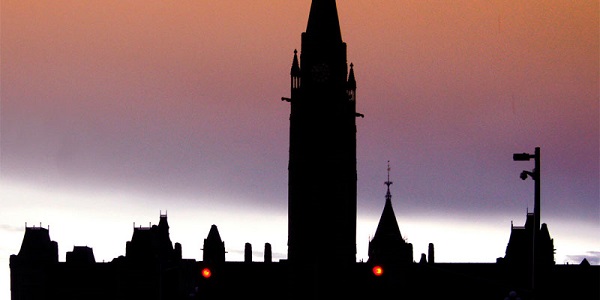Business
How big things could get done—even in Canada

From the Fraser Institute
By Philip Cross
From Newfoundland’s Muskrat Falls hydro project, to Ottawa’s Firearms Registry and the Phoenix pay system, to Montreal’s 1976 Olympics, Canada is a gold medal winner when it comes to wasting tax payer dollars. It doesn’t have to be this way.
Last year, Bent Flyvbjerg, a Danish professor of economic geography specializing in megaprojects, and Canadian journalist Dan Gardner co-authored a book How Big Things Get Done. They investigate what they coin the “Iron Law of Megaprojects,” which holds they routinely come in well over budget, far past projected deadlines, and without the projected benefits.
Unfortunately for taxpayers, the book contains numerous examples of Canadian megaprojects that follow this Law of Megaprojects. The federal government’s infamous firearms registry is a textbook template for how IT projects can go terribly wrong, ending up 590 per cent over budget. The Muskrat Falls hydro project in Newfoundland is cited as a classic demonstration of what happens when hiring a firm with little direct experience managing such a large complex project. Most famously, the 1976 Montreal Olympic Games wins the title for the largest cost overrun in Olympic history, finishing 720 per cent over budget. The authors suggest Montreal’s “Big Owe” stadium “should be considered the unofficial mascot of the modern Olympic Games.”
One thing all these Canadian examples have in common is extensive government involvement. Not that governments learned from their past mistakes. The federal government’s Phoenix pay system fiasco demonstrates that IT remains a black hole, with the government recently announcing it would abandon Phoenix after spending $3.5 billion trying to implement it. Several light train projects across the country have gone off the rails, the poster boy being the system in Ottawa, which is years behind schedule and already $2.5 billion over budget.
There are several reasons why government projects are chronically prone to failure. One is that politicians, especially late in their careers, want legacies in the form of monumental tangible projects irrespective of whether they effectively meet a public need. You can see this dynamic clearly at work today in Canada, as the Trudeau government pushes for a prohibitively expensive (probably more than $100 billion) high-speed rail connection between Windsor and Quebec City. Meanwhile, Ontario Premier Doug Ford promotes a traffic tunnel underneath Highway 401 between Brampton and Scarborough, and Quebec Premier Francois Legault revives plans for a third link connecting Quebec City to the south shore of the St. Lawrence River. While Canada clearly needs more transportation infrastructure, these projects are not the most cost-effective way of meeting the needs of commuters.
Governments deceptively deploy several tricks to help get uneconomic projects built. They routinely produce unrealistically low-cost estimates to make wasteful ego-driven projects appear affordable. Another tried and true tactic is to just “start digging a hole and make it so big, there’s no alternative to coming up with the money to fill it in,” as former San Francisco mayor Willie Brown admitted. This approach preys on the mistaken belief that large sunk costs mean scrapping a project “would be interpreted by the public as ‘throwing away’ the billions of dollars already spent” when it is actually a textbook example of throwing good money after bad.
Unlike other studies of how major infrastructure projects typically are over budget, Flyvbjerg and Gardner have some concrete recommendations on how to manage large projects that respect deadlines and budgets.
These steps include careful consideration of the actual goals of the project (airlines can meet the need for fast transport in the Windsor-Quebec corridor without the expense of high-speed rail), detailed planning and preparation followed by swift execution to minimize costly surprises (summarized by their advice to “think slow, act fast”), accounting for the cost of similar projects in the past, and breaking large projects into smaller modules to allow projects to scale back when they run into trouble. A good example of these principles at work in Canada were several oilsands projects built before 2015, when severe shortages were addressed by firms using modularity and synchronizing their work schedules to free up scarce labour and materials.
However, one major flaw in Flyvbjerg and Gardner’s analysis is their failure to understand the economics of renewable energy. They cite solar and wind projects as examples of projects that routinely finish under budget, a major factor in their declining cost. But building renewable energy is not their only cost to the energy grid, as back-up plants must be maintained for those periods when the sun is not shining or the wind is not blowing, as noted in a recent article by Bjorn Lomborg. The expense of maintaining plants that often are idle raises overall costs. This is why jurisdictions that rely extensively on renewable energy, such as Germany and California, have high energy costs that must be paid either by customers or taxpayers.
However, apart from this mistake, there is much governments and taxpayers can learn from How Big Things Get Done.
Author:
Business
Trump family announces Trump Mobile: Made in America, for America

 MxM News
MxM News
Quick Hit:
On the 10-year anniversary of Donald Trump’s iconic campaign launch, the Trump family announced the debut of Trump Mobile, a new wireless company offering American-built smartphones, 5G coverage, and a values-driven alternative to Big Tech carriers.
Key Details:
-
Donald Trump Jr. and Eric Trump introduced Trump Mobile’s flagship service Monday, calling it a “transformational” alternative aimed at “our nation’s hardest-working people.”
-
The “47 Plan,” priced at $47.45/month, offers unlimited talk, text, and data, free international calls to U.S. military families, telehealth, roadside assistance, and no credit checks.
-
Trump Mobile’s customer support is fully U.S.-based and live 24/7—“not automated,” the company says—while a new American-made “T1 Phone” is slated for release in August.
Diving Deeper:
Marking ten years since President Donald Trump descended the golden escalator to launch his first campaign, the Trump Organization on Monday announced its boldest private sector move yet: Trump Mobile.
Flanked by company executives, Donald Trump Jr. and Eric Trump unveiled the new cellular service, touting it as a patriotic, people-first alternative to legacy providers. “We’re building on the movement to put America first,” Trump Jr. said in a statement. “We will deliver the highest levels of quality and service.”
The cornerstone of Trump Mobile is the 47 Plan. Offered for $47.45/month, the plan includes unlimited data, full 5G coverage across all three major carriers, and a suite of benefits tailored to middle-class families, truckers, veterans, and anyone tired of paying premiums to companies that don’t share their values.
Among the key perks: 24/7 American-based customer service (with “real people,” not bots), comprehensive device protection, roadside assistance through Drive America, and telehealth services including mental health support and prescription delivery. Most notably, the plan includes free international calling to over 100 countries—an effort the Trump family says honors U.S. military families stationed abroad.
“We’re especially proud to offer free long-distance calling to our military members and their families,” said Eric Trump. “Those serving overseas should always be able to stay connected to the people they love back home.”
Unlike traditional providers, Trump Mobile advertises no contracts and no credit checks, appealing to a demographic long underserved by mainstream telecom giants. “Hard-working Americans deserve a wireless service that’s affordable, reflects their values, and delivers reliable quality they can count on,” Eric Trump added.
The company is also preparing to launch the T1 Phone in August—a sleek, gold smartphone “engineered for performance” and “proudly designed and built in the United States.” With that, the Trump Organization is not just entering the mobile market—it’s staking a claim as a direct competitor to Apple and Samsung.
Business
Carney praises Trump’s world ‘leadership’ at G7 meeting in Canada

From LifeSiteNews
Canada’s prime minister said it was a ‘great honor’ to host the U.S. president and praised him for saying Canada wants to work with the U.S. ‘hand-in-hand.’
During the second day of the G7 leaders meeting in the Kananaskis area in Alberta, Canadian Prime Minister Mark Carney praised U.S. President Donald Trump’s world “leadership” despite saying many negative things about him during his election campaign.
While speaking to reporters Monday, Trump hinted that a new trade deal between Canada and the United States was potentially only “weeks” away. This came after a private meeting with Carney before the official G7 talks commenced.
“We’ve developed a very good relationship. And we’re going to be talking about trade and many other things,” Trump told reporters.
Carney was less vocal, however. He used the opportunity to tell reporters he was happy Trump came to his country for the G7 meeting, saying it was a “great honor” to host him.
“This marks the 50th birthday of the G7, and the G7 is nothing without U.S. leadership,” Carney told reporters.
He then spoke about Trump’s “personal leadership” on world issues and praised him for saying Canada wants to work with the U.S. “hand-in-hand.”
Carney ran his election campaign by claiming the Conservative Party would bow to Trump’s demands despite the fact that the party never said such things.
During his federal election campaign, Carney repeatedly took issue with Trump and the U.S. that turned into an anti-American Canadian legacy media frenzy.
However, the reality is, after Carney won the April 28 federal election, Trump praised him, saying, “Canada chose a very talented person.”
Many political pundits have said that Carney owes his win to Trump, as the U.S. president suggested on multiple occasions that he would rather work with Carney than conservative leader Pierre Poilievre.
Trump has routinely suggested that Canada become an American state in recent months, often making such statements while talking about or implementing trade tariffs on Canadian goods.
As for Carney, he has said his government plans to launch a “new economy” in Canada that will involve “deepening” ties to the world.
-

 Business2 days ago
Business2 days agoEU investigates major pornographic site over failure to protect children
-

 Canadian Energy Centre2 days ago
Canadian Energy Centre2 days agoCross-Canada economic benefits of the proposed Northern Gateway Pipeline project
-

 Alberta2 days ago
Alberta2 days agoAlbertans need clarity on prime minister’s incoherent energy policy
-

 Economy2 days ago
Economy2 days agoCarney’s Promise of Expediting Resource Projects Feels Like a Modern Version of the Wicked Stepmother from Disney’s Cinderella
-

 conflict18 hours ago
conflict18 hours ago“Evacuate”: Netanyahu Warns Tehran as Israel Expands Strikes on Iran’s Military Command
-

 Energy17 hours ago
Energy17 hours agoCould the G7 Summit in Alberta be a historic moment for Canadian energy?
-

 Alberta1 day ago
Alberta1 day agoAlberta’s grand bargain with Canada includes a new pipeline to Prince Rupert
-

 Health21 hours ago
Health21 hours agoLast day and last chance to win this dream home! Support the 2025 Red Deer Hospital Lottery before midnight!







